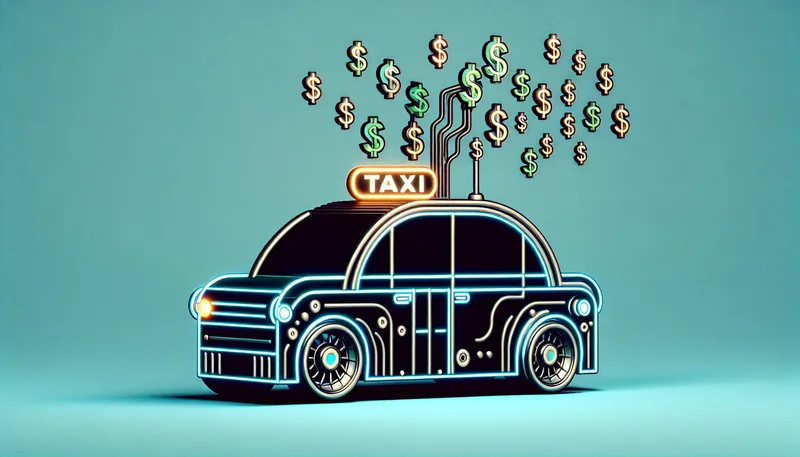Driverless Taxis: Expansion Plans vs. Real-World Concerns
Waymo's Expansion: A Smooth Ride or a Collision Course with Reality?
Waymo's aggressive expansion, from San Francisco freeways to the streets of Sydney, Australia, paints a picture of a company on the verge of dominating the autonomous vehicle market. But let's pump the brakes for a second. While the press releases tout "millions of miles" and "robust safety protocols," a closer look reveals a more complex, and potentially turbulent, road ahead.
The Numbers Game: Miles Driven vs. Real-World Impact
Waymo boasts about its extensive testing and millions of paid trips. Okay, fine. But here's the thing: those miles aren't created equal. Driving in controlled environments or sparsely populated areas (like parts of Arizona) is a world away from navigating the chaotic streets of New York City or the unpredictable traffic of Sydney. It's like comparing a flight simulator to landing a 747 in a hurricane. Waymo's claim of having "already had an impact on daily life in major cities" needs some serious unpacking.
In San Francisco, where Waymo has been operating for a while, the impact seems to be less about revolutionizing transportation and more about exacerbating existing problems. Taxi drivers, already struggling with the rise of Uber and Lyft, are facing further economic hardship. According to the San Francisco Taxi Workers Alliance, not a single medallion (taxi permit) has been sold since 2016, and over 40% of purchasers have lost their medallions to foreclosure. Is Waymo directly responsible for this? Maybe not entirely. But it's certainly a contributing factor. And that's a data point that doesn't make it into Waymo's marketing materials. I've looked at hundreds of these industry trends and this specific stat is particularly concerning.
And what about the claims of enhanced safety? While Waymo emphasizes its "robust safety protocols," the reality of autonomous driving is rarely discussed. How do these vehicles handle unexpected events? What about pedestrian behavior and cyclists? The data simply isn't comprehensive enough to declare victory on the safety front.
The Human Factor: Jobs, Economics, and the Immigrant Experience
The push for autonomous vehicles often overlooks the human cost. In New York City, nearly 90% of taxi drivers and chauffeurs are immigrants. For many, driving is a pathway to economic stability and the "American Dream." Waymo’s arrival threatens this pathway. As Graham Hodges, a history professor and author of ‘Taxi! A Cultural History of the New York City Cabdriver,’ points out, Waymo "would mean more pressure and more difficulty" for an industry where the majority of workers are over the age of 35.
This isn't just about numbers on a spreadsheet; it's about real people, real families, and real livelihoods. The Independent Drivers Guild (IDG), representing over 80,000 Uber and Lyft drivers, has launched a petition calling for a ban on AV companies in New York State. They argue that New York City is "not a testing ground for Silicon Valley’s profit-driven experiments." That's a sentiment that resonates with many, and it's a data point—a qualitative one—that shouldn't be ignored.

Waymo's expansion into Sydney raises similar concerns. While the company focuses on the technological marvel of driverless cars, the potential displacement of taxi and ride-share drivers is a significant issue. What plans are in place to support these workers? What retraining programs will be offered? These questions remain largely unanswered. Google wants to bring its driverless taxis to Sydney’s streets
The Road Ahead: A Collision of Ambition and Reality?
Waymo's ambitions are undeniable. The company is expanding its service areas, testing new technologies (like freeway driving), and engaging with regulators around the world. But the path to fully autonomous transportation is far from smooth.
The success of Waymo's expansion hinges on several factors: regulatory approval, technological advancements, and public acceptance. In New York City, Waymo faces the challenge of convincing the state to change its laws, which currently require a person behind the wheel. And with Zohran Mamdani, a vocal advocate for taxi drivers, now serving as mayor, Waymo's path may be even more difficult.
Technological hurdles remain as well. Can Waymo's AI truly handle the complexities of urban driving? Can the company ensure the safety and reliability of its vehicles in all weather conditions? These are questions that only time and further testing can answer.
Finally, public acceptance is crucial. Are people truly ready to trust their lives to a driverless car? Are they willing to sacrifice human interaction for the convenience of autonomous transportation? The answers to these questions will determine whether Waymo's vision becomes a reality or remains a "rich guy's fantasy," as one expert put it.
The company is expanding its Bay Area coverage area to include San José, establishing more than 260 square miles of uninterrupted service across the region. (That’s a lot of territory, and it’s likely to get even bigger.) Waymo says its self-driving taxis will take customers on freeways for the first time
The Hype Doesn't Match the Data
Tags: driverless taxis
Kathy Ireland: Still Doing... Stuff?
Next PostBlackstone and the Griddle Craze: What's Cooking?
Related Articles
